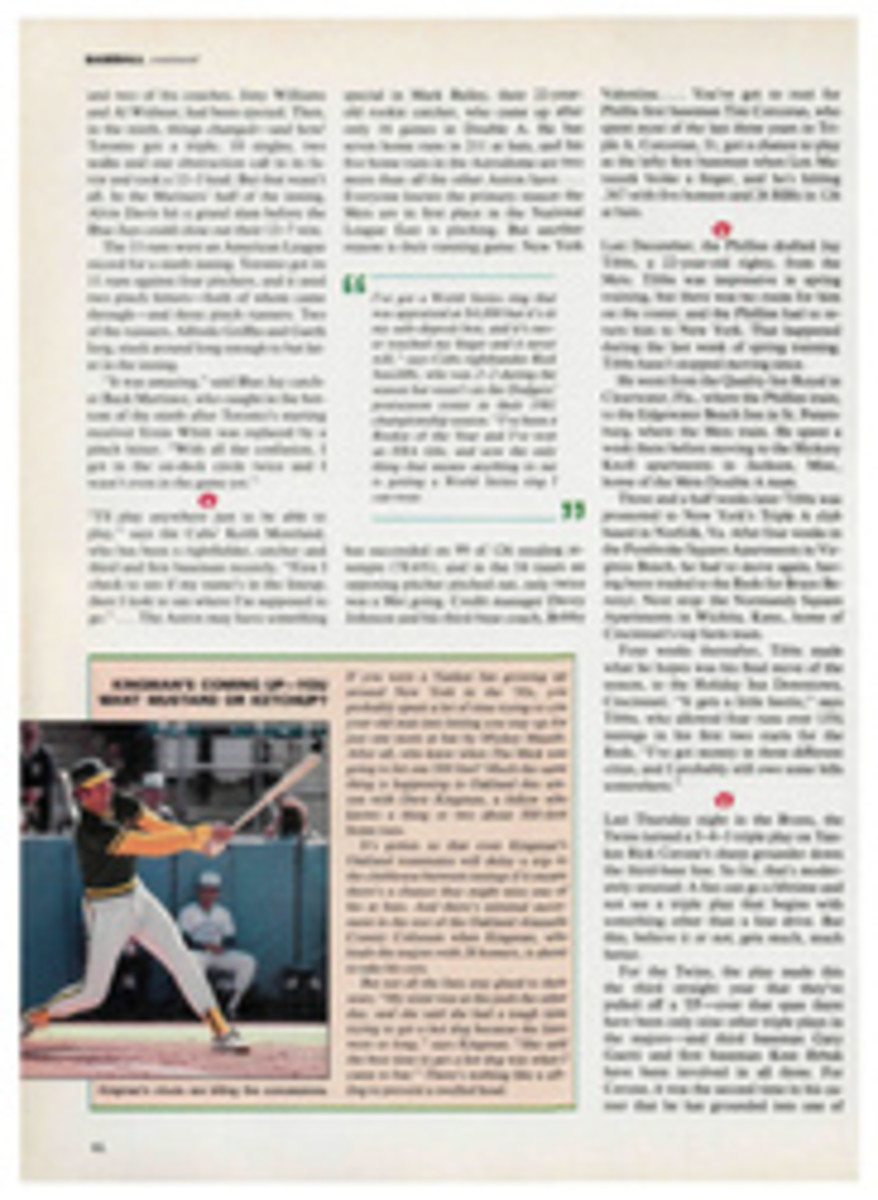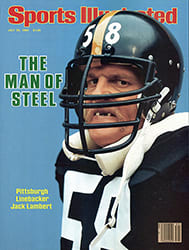
This was his crowning achievement
Belmont Park was a temple of gloom last Saturday afternoon; dark clouds hovered overhead, fog obscured the view of the backstretch and a day-long rain had turned the track to butterscotch pudding. But when 5-year-old Fit to Fight pounded through the sloppy stretch to win the $341,000 Brooklyn Handicap by a walloping 12½ lengths, the soggy crowd reacted as though the sun had suddenly appeared after a long, long absence. And, in a way, it had.
Fit to Fight's impressive win in the 1½-mile Brooklyn, combined with his Memorial Day victory in the Metropolitan Mile and his Fourth of July triumph in the 1-mile Suburban Handicap, gave him a sweep of the three-race Belmont series known as the Handicap Triple Crown. It has been 23 years since the great Kelso accomplished that feat; in the 91 years that the Handicap Triple Crown has existed, only three horses before Fit to Fight had won it: Whisk Broom II (1913), Tom Fool (1953) and Kelso. All three are enshrined in Racing's Hall of Fame in Saratoga, where Fit to Fight is now sure to find a niche.
In truth, Fit to Fight doesn't really rank with those racing legends. He has been run sparingly for four seasons and until this year's Metropolitan he hadn't won a Grade I race. Still, Fit to Fight has shown moments of, if not greatness, then certainly gameness. In the Metropolitan, Paul Mellon's bay raced sprinter A Phenomenon stride for stride through the stretch to win by a head. "I don't think he's ever run a better race," trainer Mack Miller said of Fit to Fight, who carried 124 pounds to A Phenomenon's 126.
Five weeks later Fit to Fight was the highweight horse, at 126, in the Suburban. Jockey Jerry Bailey and Fit to Fight led all the way, finishing 3¾ lengths ahead of Canadian Factor, who carried only 116. "He seems to have more confidence than he used to," said Bailey after that race. "And there's a lot more to him than you saw today."
With those two Triple Crown wins in hand, Miller, who had always considered Fit to Fight a miler, began to worry about the extra half mile of the Brooklyn. "Had he not won the first two legs," he said following Saturday's victory, "I wouldn't have run him in the Brooklyn. I knew he'd pick up a lot of weight." That's an understatement. Fit to Fight was given 129 pounds, 13 to 23 more than his seven rivals. On the morning of the race he also got an additional handicap—rain. Fit to Fight's record indicated that he disliked an off track. In the 1983 Metropolitan, for instance, he ran in the mud and finished eighth in a field of 13.
As it turned out, Miller had nothing to worry about. Fit to Fight pounced from the starting gate like a cougar and bounded to the fore, as if to say, "Come and get me, here I am." No horse could. With a half mile to go. Vision made a modest move, but by the top of the stretch Fit to Fight had pulled ahead by six lengths. It went to seven, then 10. The win pushed Fit to Fight's earnings to $1,042,075.
That's not bad for a horse who didn't win a stakes race until late in his third year, triumphing in the one-mile Jerome at Belmont by six lengths. But as Bailey said of Fit to Fight after the Metropolitan, "Each year he gets better and better." At four, he won the 1‚⅛-mile Stuyvesant Handicap at Aqueduct and attracted syndication offers of some $2 million to retire to stud. To most horsemen, it was the obvious move, but not to Miller and Mellon.
"The more I thought about it," said Miller, "the more I thought maybe we should try him for another year. He certainly had paid his way in '83 [$210,559], and horses can develop between their fourth and fifth year. Mr. Mellon and I talked it over and decided to race Fit to Fight again in '84."
Rarely does a horse develop quite the way Fit to Fight did this past winter at Miller's quarters in Aiken, S.C., where he suddenly bloomed, adding considerable weight and muscle tone. "I never saw anything like it," says Miller. "I pointed him at the Metropolitan Mile because I felt that was his best distance. Boy, did he teach me something!"
Mellon shared in the lesson. "I was nervous before the race," he said after the Brooklyn. "I didn't know if Fit to Fight could go 1½ miles over that kind of track. And remember, one of the best trainers in the world had told me more than once that he was a miler."
Mellon and Miller have both won a lot of big races. Miller has trained six United Nations Handicap winners and three grass champions. Mellon won the English Derby and France's Arc de Triomphe with Mill Reef in '71, and has owned two Horses of the Year (Arts and Letters in 1969, Fort Marcy in 1970). Now his Fit to Fight has won the Handicap Triple. "It's right up there with the English Derby and the Arc," said Mellon. "It's quite an accomplishment for the horse."
"It's something you dream about," said Miller.
"I'm a little young to appreciate the tradition of this," said Bailey, who's 26. That's true. Fit to Fight's jockey was only three the last time around.
TWO PHOTOS
The slop couldn't stop Fit to Fight from romping to a 12½-length win over Vision.
TWO PHOTOS
Fit to Fight got a jump at the start (left) and led by six lengths going into the stretch.
PHOTO
Big wins, so new to Bailey, are old hat to Mellon.
PHOTO
Miller thought his horse was only a miler.

